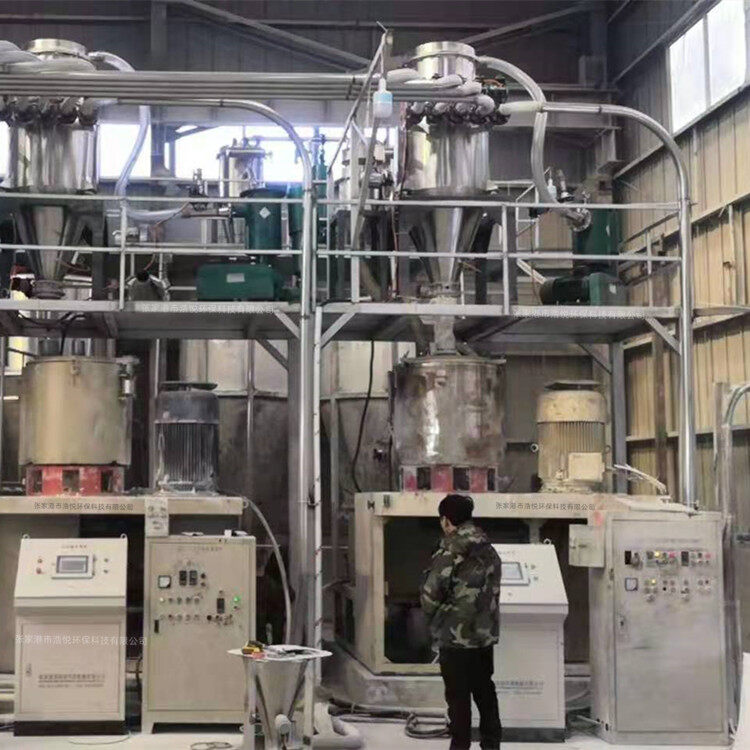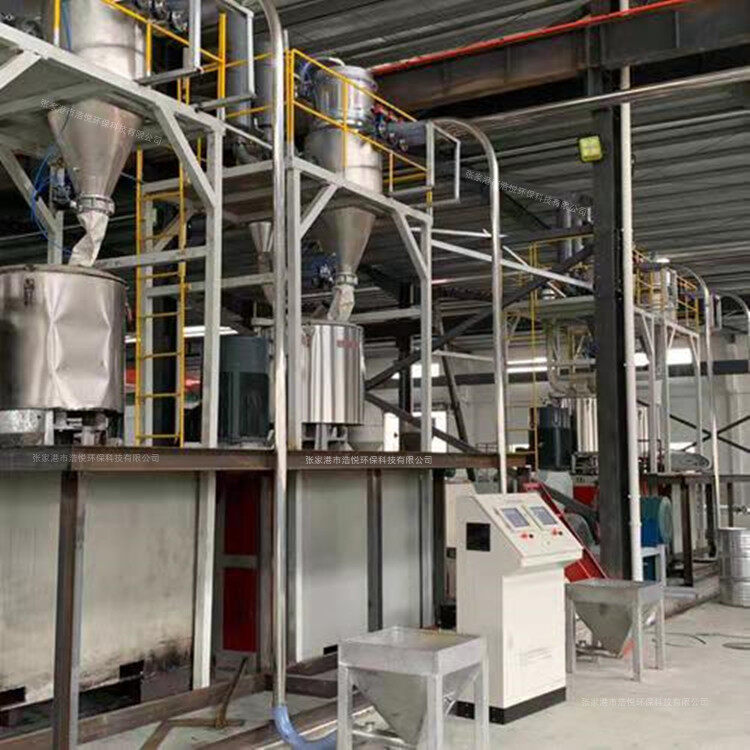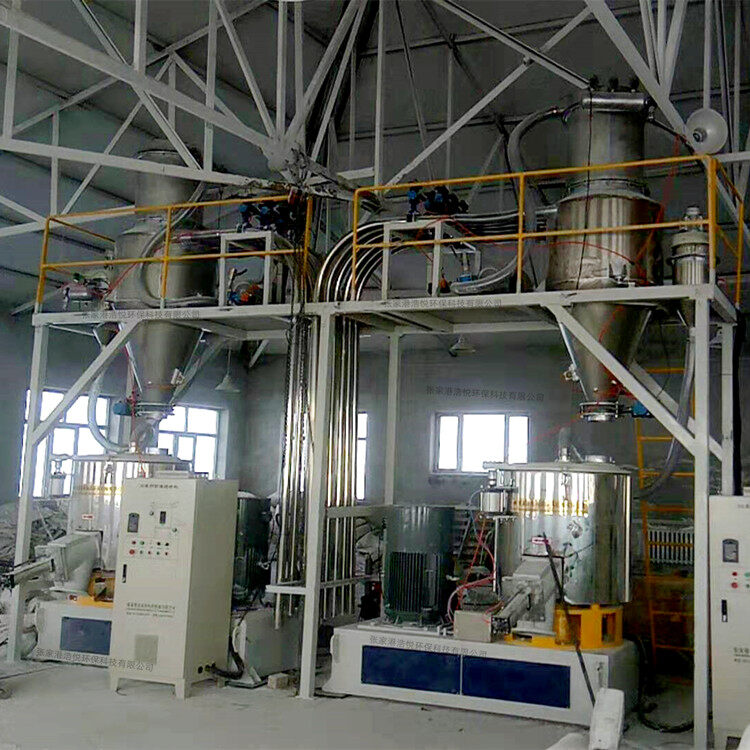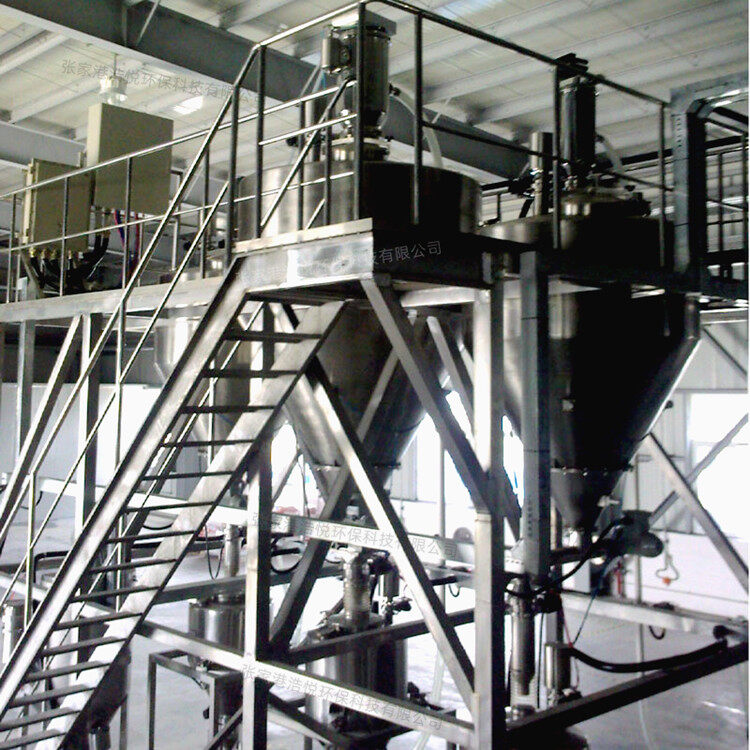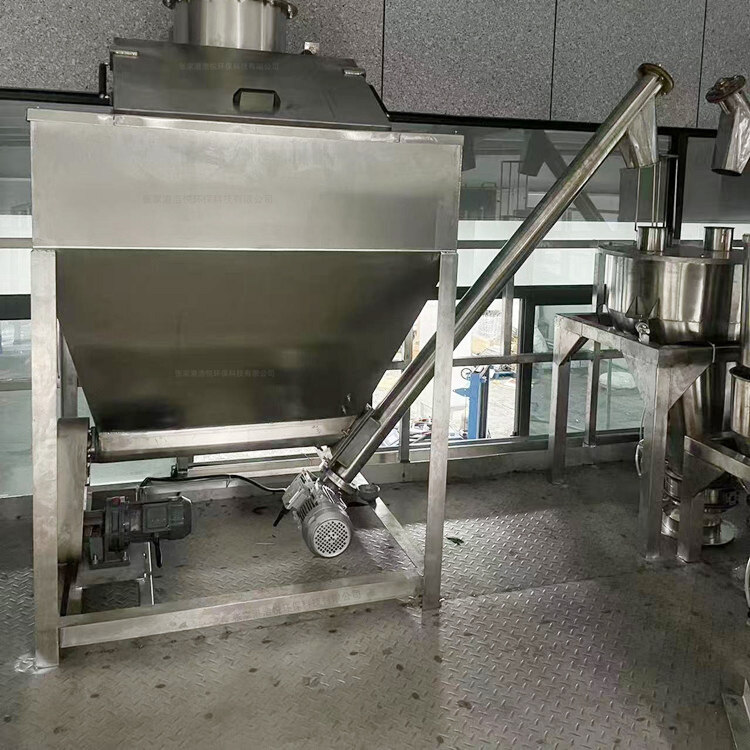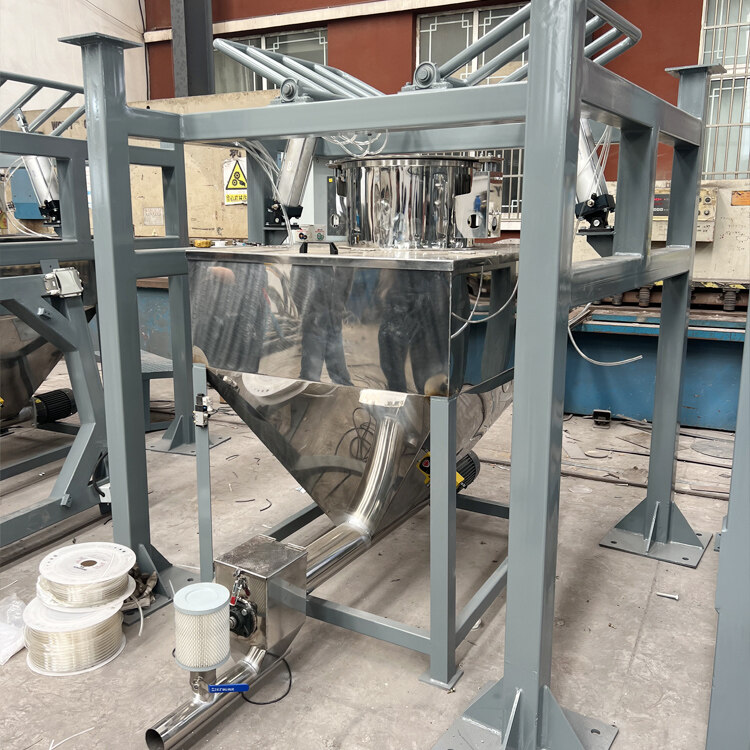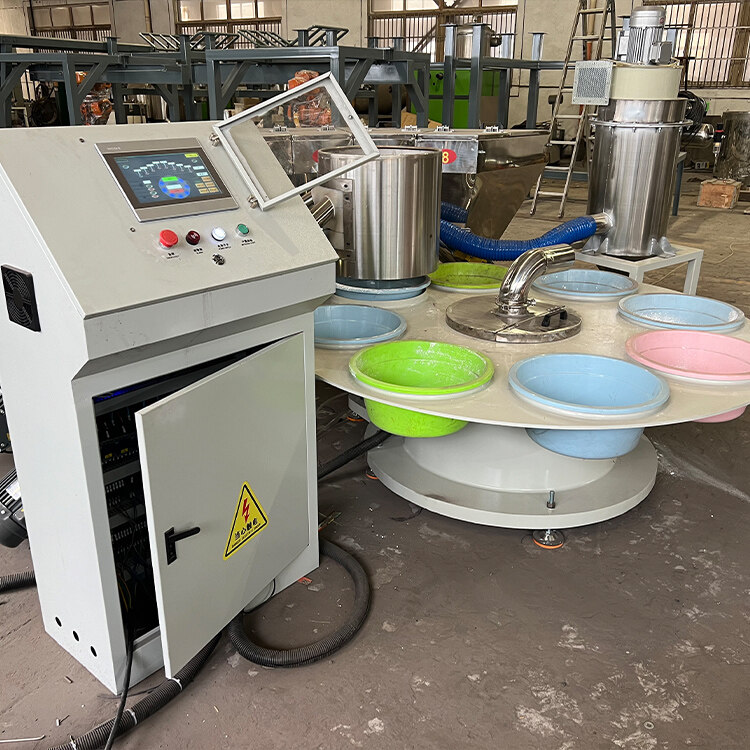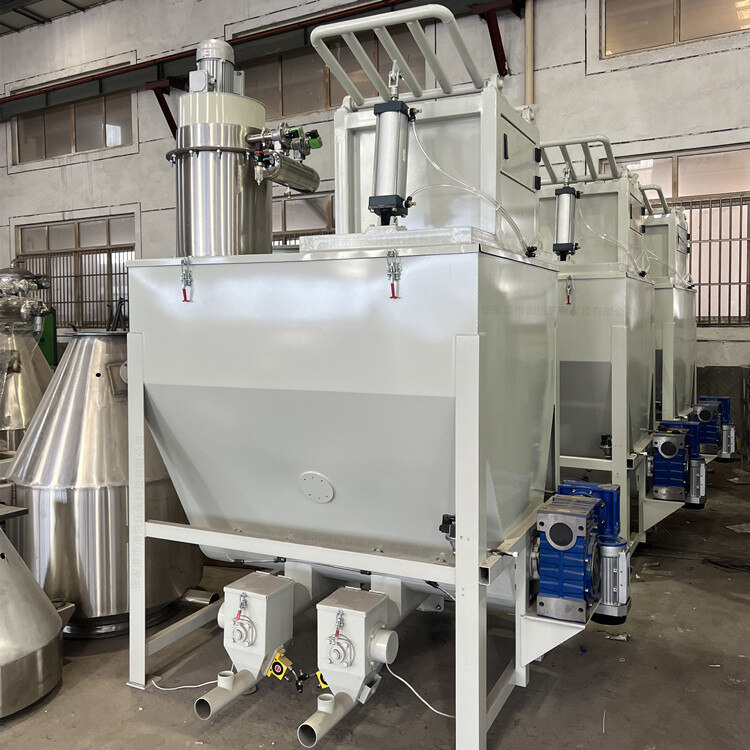- Introduction to automatic batching machine and fully automatic batching machine equipment
- The powder metering system tells you about the introduction of the mixing and drying machine
- 1000kg vacuum feeding machine
- Fully automatic small material batching system
- Research on Innovation of Automatic Weighing Machine Technology
- Design and operation of automatic batching system using PLC, industrial computer and frequency converter
Powder automatic metering and mixing system
- Category:Automatic metering and conveying equipment
- Hits:208次
- Release Date:2025-06-27
- Share:
- Inquiry
- Details
In modern industrial fields such as chemical, pharmaceutical, food, and new energy, precise measurement of powder materials is the core link to ensure product quality and optimize production processes. The automatic powder measurement technology integrates high-precision sensors, automated control, and intelligent algorithms to achieve precise measurement and control of parameters such as powder material weight and flow rate. It effectively solves the problems of low efficiency, large errors, and serious dust pollution in traditional manual measurement, and has become an important support for promoting the transformation of industrial production towards automation and intelligence.
1、 The technical principle of automatic powder metering
The automatic measurement of powder is mainly based on the principles of mechanics, electricity, and fluid mechanics, and achieves precise measurement through physical quantity conversion and signal processing. The core process is that the physical parameters of the powder material (such as weight, volume, flow rate) are converted into electrical signals by sensors, and then processed through amplification, filtering, A/D conversion, etc. Finally, the measurement results are calculated by the control system.
Taking commonly used weighing methods as an example, utilize the strain effect of resistance strain gauges or capacitive weighing sensors. When the powder material acts on the weighing platform, the elastic element inside the sensor deforms, causing changes in the resistance value of the strain gauge or the spacing between the capacitor plates. The physical changes are converted into voltage signals through a Wheatstone bridge, amplified by a signal conditioning circuit, converted into digital signals by an A/D converter, and transmitted to the control system for calculation and analysis, thereby obtaining the real-time weight of the material.
Volumetric metering is based on the principle of fixed volume conveying, using devices such as rotary valves and screw pumps to periodically move and transport powder materials according to a predetermined volume. The control system precisely controls the material conveying volume per unit time by adjusting the speed of the device, achieving flow measurement.
2、 Core system composition
(1) Sensor unit
Weighing sensor: It is the core component of powder measurement, and common types include resistance strain gauges, capacitance gauges, and piezoelectric gauges. Resistance strain sensors are widely used in dynamic and static weighing scenarios due to their high accuracy (up to 0.05% FS) and good stability; Capacitive sensors have strong anti-interference ability and fast response speed, making them suitable for high-precision measurement needs; Piezoelectric sensors are commonly used in weighing environments with high impact forces.
Flow sensor: For powder pneumatic conveying scenarios, impulse flow meters, Coriolis mass flow meters, etc. are used. The impulse flowmeter calculates the flow rate by detecting the impact force of the powder flow on the detection plate; The Coriolis mass flowmeter is based on the principle of Coriolis force and can directly measure mass flow without being affected by factors such as temperature and pressure, with an accuracy of up to ± 0.1%.
Level sensor: used to monitor the inventory of powder materials in the silo. Common types include radio frequency admittance, ultrasonic, and heavy hammer. Radio frequency admittance sensors determine the material level by detecting changes in admittance between the material and the electrode; Ultrasonic sensors use the principle of sound wave reflection to measure the height of the material surface; The heavy hammer sensor directly detects the material level through mechanical contact.
(2) Control system
The control system is centered around a programmable logic controller (PLC) or industrial computer (IPC), paired with a human-machine interface (HMI). PLC is responsible for real-time collection of sensor data, execution of preset measurement algorithms, and control of actuator actions; Industrial computers are suitable for complex data processing and advanced algorithm operations, such as machine learning based error compensation algorithms. HMI provides visual interfaces for operators, supporting functions such as parameter settings, recipe management, operation status monitoring, and fault alarms. The system can also interface with the factory production management system (MES) through Ethernet, RS485, and other interfaces to achieve data sharing and remote monitoring.
(3) Execution mechanism unit
The executing agency adjusts the transportation and measurement of powder materials according to the instructions of the control system. Common equipment includes electric valves, screw conveyors, rotary feeding valves, etc. Electric valves regulate material flow by controlling the degree of opening and closing; The screw conveyor controls the conveying volume by adjusting the motor speed; The rotary feeding valve achieves quantitative feeding by adjusting the rotor speed, ensuring accurate transportation of powder materials according to preset parameters.
3、 Typical application scenarios
(1) Pharmaceutical industry
In pharmaceutical production, powder automatic metering technology is used for precise proportioning of raw materials and excipients. For example, in the capsule filling process, a high-precision weighing and measuring system ensures that the drug content error of each capsule is controlled within ± 1%, in compliance with GMP (Good Manufacturing Practice) requirements. At the same time, the fully enclosed metering and conveying process avoids cross contamination of materials, ensuring the quality and safety of drugs.
(2) Food industry
Food processing requires extremely high measurement accuracy and hygiene. Powder automatic measuring equipment is widely used in the production of milk powder, seasonings, baking ingredients, and other products. In the production of milk powder, precise control of the ratio of milk powder and nutritional additives is achieved through weight loss measurement technology to ensure that the nutritional content of the product meets the standard; On the biscuit production line, the automatic measuring system accurately measures raw materials such as flour, sugar, and oil to ensure consistency in product taste and quality.
(3) Chemical industry
The powder measurement in the chemical industry involves various materials such as catalysts, pigments, plastic particles, etc. For flammable and explosive powders (such as lithium battery cathode materials), an explosion-proof weighing and measuring system is used, combined with inert gas protection, to ensure production safety. In paint production, the automatic metering system precisely controls the ratio of resin, pigment, and filler, improves product quality stability, and reduces raw material waste.
(4) New energy industry
In the production process of lithium batteries, powder automatic metering technology is used for precise weighing and proportioning of electrode materials such as lithium iron phosphate and graphite. High precision metering control directly affects the energy density and cycle life of batteries. By using Coriolis mass flow meters and weight loss metering devices, the material ratio error can be controlled within ± 0.3%, ensuring consistent battery performance.
4、 Technological advantages and development trends
(1) Core technological advantages
High precision measurement: Advanced sensors and algorithms keep measurement errors within a very small range, ensuring product quality stability.
Automation and Intelligence: Full process automation reduces manual intervention and labor intensity; Intelligent algorithms achieve adaptive adjustment and fault warning, improving production efficiency.
Environmental Protection and Safety: The fully enclosed metering process effectively prevents dust leakage and improves the working environment; Explosion proof and anti-static design meets the measurement requirements of hazardous materials.
Data traceability: The system records measurement data in real-time, supports production process traceability and quality analysis, and facilitates process optimization.
(2) Future Development Trends
Intelligent upgrade: Introducing artificial intelligence and IoT technology to achieve self diagnosis, automatic calibration, and adaptive control of devices, optimizing measurement algorithms through machine learning, and improving system performance.
Multi functional integration: Develop composite equipment that integrates metering, conveying, and mixing, reducing footprint and improving system integration and collaborative efficiency.
Miniaturization and High Precision: Developing miniature high-precision measuring equipment for high-end manufacturing fields such as electronics and semiconductors to meet the measurement needs of nanoscale powder materials.
Green energy conservation: optimizing equipment structure and control strategies to reduce energy consumption; Adopting energy-saving sensors and actuators to promote sustainable development.
Powder automatic metering technology has become a key technology in modern industrial production due to its excellent performance and wide applicability. With the continuous advancement of technology, this technology will continue to innovate and break through, providing stronger support for the high-quality development of various industries.


